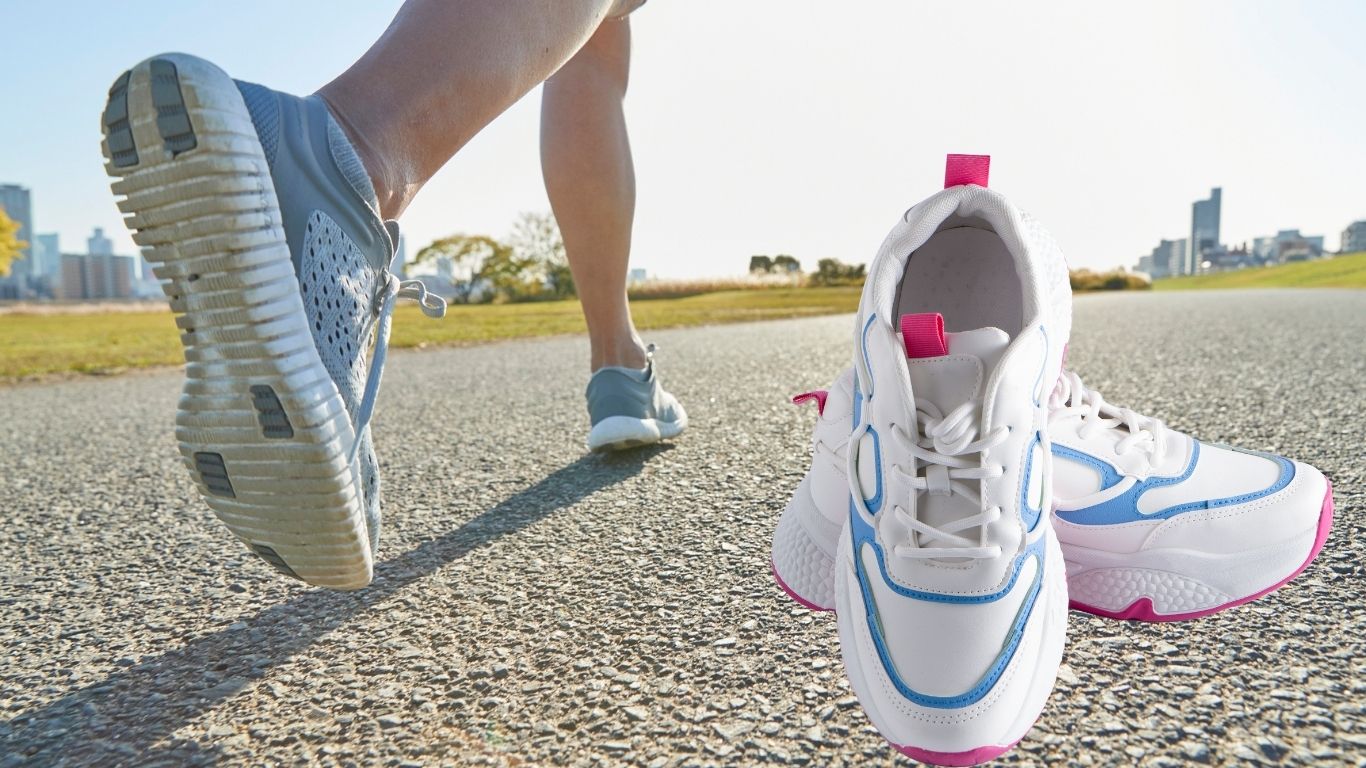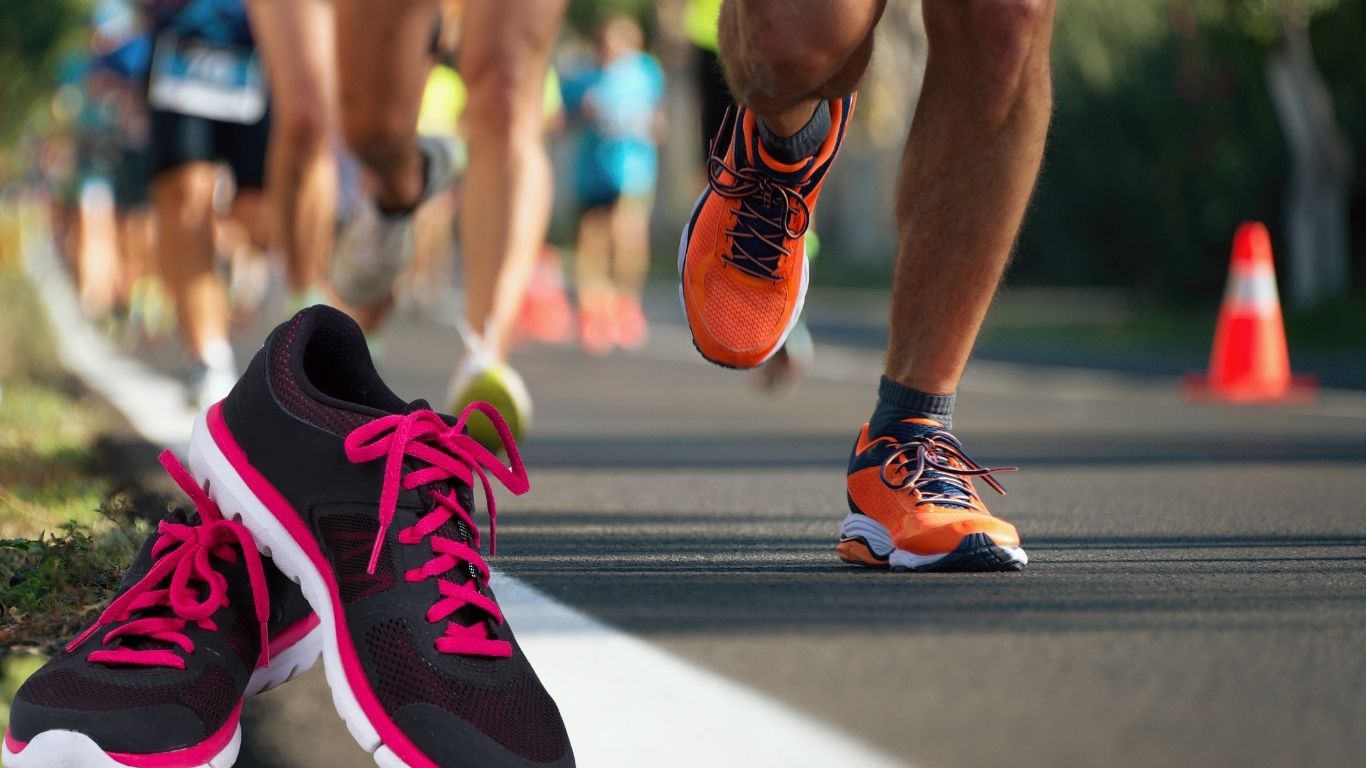The best running shoes for men, covering how to choose, what to consider, and what models are standing out in 2025.
1. Why the Right Running Shoe Matters
Choosing the right running shoe is more than just style. The correct shoe can:
- Reduce risk of injury (joints, knees, ankles, Achilles, plantar fasciitis, etc.)
- Improve comfort and enjoyment during runs
- Help performance (better cushioning, energy return, weight, etc.)
- Improve durability
So the “best” shoe depends a lot on you—your feet, your running style, the distances, surfaces, and your goals.
2. Key Factors to Consider
Here are the main things you should look for when picking running shoes:
| Factor | Why It Matters | What to Check |
| Foot type / gait | Neutral feet, overpronation (when the foot rolls too far inward), underpronation / supination (rolls outward) all need different support or stability structures. | Look for stability shoes or neutral shoes; possibly use a gait analysis; consider orthotics if needed. |
| Cushioning & Stack Height | Distance and comfort: runs on pavement or long runs need more cushioning; high stack height gives more foam between foot & ground. | How “soft” or “plush” it feels; how responsive the foam is; heel vs toe height. |
| Heel-to-Toe Drop | The difference in height between heel and forefoot. More drop shifts impact differently; low-drop can encourage more natural landing but might stress calves. | If coming from flat or zero drop, transition gradually. |
| Weight | Lighter shoes feel faster, better for speed/tempo work and racing; often less durable or less cushioned ideally. | Balance: don’t go too light if it’s at the cost of protection. |
| Durability & outsole | Shoes wear out: foam compresses, tread wears down, stability elements lose effectiveness. | Check outsole material, protective rubber, how thick/firm the midsole is, etc. |
| Fit & Comfort | Even a technically great shoe won’t help if it doesn’t fit your foot width, arch, or shape. | Try in the evening (when your foot is slightly swollen); leave a thumb’s width of space in the toe box; ensure heel doesn’t slip; check width options. |
| Terrain or Surface | Road, trail, gravel, treadmill—all have different demands. Trail shoes need more grip, protection. | Choose road vs trail vs hybrid; look at tread, toe protection, water resistance if needed. |
| Price vs Value | More expensive doesn’t always mean better for your needs. Sometimes a mid‑priced shoe gives exactly what you need. | Consider how often you run, mileage, how often you’ll replace shoes. |

3. Types of Running Shoes
Understanding categories helps pick what’s right:
- Neutral Trainers
Good for runners with a neutral gait (little or no over/under-pronation). Focus is on cushioning, comfort, sometimes energy return. - Stability Shoes / Motion Control
For overpronators. They include features to prevent excessive inward rolling of the foot—e.g. denser foam on the medial (inner) side, supportive heels, structured midsoles. - Cushioned / Max Cushion
Very thick foam, lots of shock absorption. Ideal for long runs, recovery runs, or heavy runners. Sometimes at the expense of speed or ground feel. - Speed / Tempo / Racer Shoes
Lower cushioning, lighter weight, possibly with carbon plates or aggressive rockers for racing or speed workouts. - Trail Running Shoes
Modified soles for grip, reinforced toes, tougher uppers, maybe water protection, etc. - “Super‑Trainers” / Hybrid Performance Shoes
Combine some cushioning, some speed features; good for mixed training (longer runs + faster efforts + maybe race‑prep without the full race flat).
4. What’s Trending in 2025
Recent trends & advances that are worth paying attention to:
- Foam technologies getting lighter, higher rebound, better energy return. Brands keep innovating on softer yet durable foams.
- Carbon plates / propulsion plates in more shoes (not just pure racing shoes) to give a spring‑like effect.
- Stack heights are increasing, especially for cushioned and recovery shoes. Some shoes are now very plush without being overly heavy.
- More “everyday” shoes becoming versatile enough for longer runs OR speed work (i.e. hybrid models).
- Sustainability: more recycled materials, more eco‑friendly constructions.
5. Top Picks for Men in 2025
These are some of the models that reviewers and experts are pointing to as among the best, for different uses. I grouped them by what kind of runner or run they’re suited for.
| Use Case | Shoe | What Makes It Stand Out (Pros) | Some Trade‑Offs / For Whom It Might Not Be Ideal |
| Best All‑Round / Everyday Trainer | Nike Pegasus 41 — great comfort, fairly balanced ride, solid cushion + energy return. (TechRadar) | Might feel a bit heavy for someone wanting a racing‑flat feel; forefoot firmer for some. (TechRadar) | |
| Maximum Cushion / Long Runs / Recovery | Hoka Bondi 9 — very plush cushioning, soft underfoot, suited for easy long runs. (Runner’s World) | Not ideal for fast tempos; bulky in feel; maybe less ground feel; heavier. (Runner’s World) | |
| Speed / Race Shoes | Adidas Adizero Evo SL — springy ride, lightweight, good for faster runs without going full race‑flat. (Runner’s World) | Narrow fit for some; maybe tongue shift on long runs; maybe less cushioning than max‑cushioned trainers. (Runner’s World) | |
| Stability / Support | Asics Gel‑Kayano 31 — supportive structure, especially for overpronators; good cushioning + durability. (Forbes) | Some find it too cushion‑heavy (less feedback or ground feel); heavier than neutral shoes. (Forbes) | |
| Budget / Value | Asics GT‑1000 12 — more affordable, still solid cushioning, decent stability features. (Men’s Journal) | Less premium materials; maybe less durable outsole or less fancy upper; lighter support. | |
| Trail / Mixed Terrain | Altra Lone Peak 9+ — good grip, wide toe box, durable outsole, zero drop. (Runner’s World) | Less cushion for very long road runs; zero drop may stress calves/tendons if you’re not used to it. |
6. How to Choose Based on Your Profile
To narrow down among the many options, consider your own profile:
- How many miles per week do you run? If you run fewer miles, comfort may be more important than an ultra‑durable outsole. If you log heavy mileage, durability and sufficient cushioning matter more.
- What distances you run: short runs, long runs, speed workouts, races. Some shoes are excellent for short and fast; others are built for endurance.
- Your running surface: pavement vs trail vs treadmill vs mixed. Trail requires different grip and protection. Pavement wears out shoes faster.
- Footwear history: What shoes you used before, what problems you had (shin splints, knee pain, etc.). This helps you avoid repeating mistakes.
- Budget: How much you’re willing to spend, how often you plan to replace shoes.
- Comfort over specs: Even if a shoe has all the right specs, if it doesn’t feel right (you can feel rubbing, slipping, etc.), it probably won’t serve well over time.

7. Care, Lifespan, Replacement
- Running shoes usually last 300‑500 miles (~480‑800 km), depending on build, runner’s weight, surface, etc. If cushioning or outsole is worn down, it’s time to replace.
- Rotate pairs if possible: having two pairs and alternating can extend life (foam recovers, shoes dry out, etc.).
- Keep them clean, dry, and avoid extreme bending/twisting.
- Store them properly, not compressed under heavy things.
8. Mistakes to Avoid
- Buying purely for looks; fit should come first.
- Buying shoes that are too small or too tight in the toe. Your feet swell during runs.
- Ignoring the pronation/stability needed (if you overpronate, purely neutral shoes may lead to issues).
- Not replacing shoes often enough—worn cushioning or support can lead to injury.
- Trying to use one shoe for everything if the demands are very different (speed work vs long slow runs vs trail).
9. Why “Best” Will Be Different for Different People
Everything above shows that the “best” shoe is highly individualized. Two runners could try the same model and one loves it, another hates it, because:
- One has a different foot shape (arch height, width, toe box profile).
- Different running biomechanics.
- Different goals (recreation vs competition).
- Different surfaces or climates.
- Even personal preferences: how firm or soft the cushioning should feel, how much ground feels, stiffness, etc.
So the best approach: try if possible, do gait/foot‑analysis, use trusted reviews + personal feel.
10. Summary & Recommendations
Here’s a quick summary to help you decide, plus some recommendations based on common runner types:
- If you run daily moderate distance / all‑around training, look for a neutral trainer with good cushioning and durability—e.g. Nike Pegasus 41, Brooks Ghost models, etc.
- If you do long runs or recovery runs, prioritize maximum cushioning and comfort—something like the Hoka Bondi 9.
- If you need stability (overpronate), go for stability‑specific models like Asics Gel‑Kayano line, Brooks Adrenaline, New Balance stability series.
- If you’re racing or doing speed work, try lighter, more responsive or plated models like the Adidas Evo SL, or super‑trainer/racer hybrid shoes.
- Always get the right fit; comfort is king.
